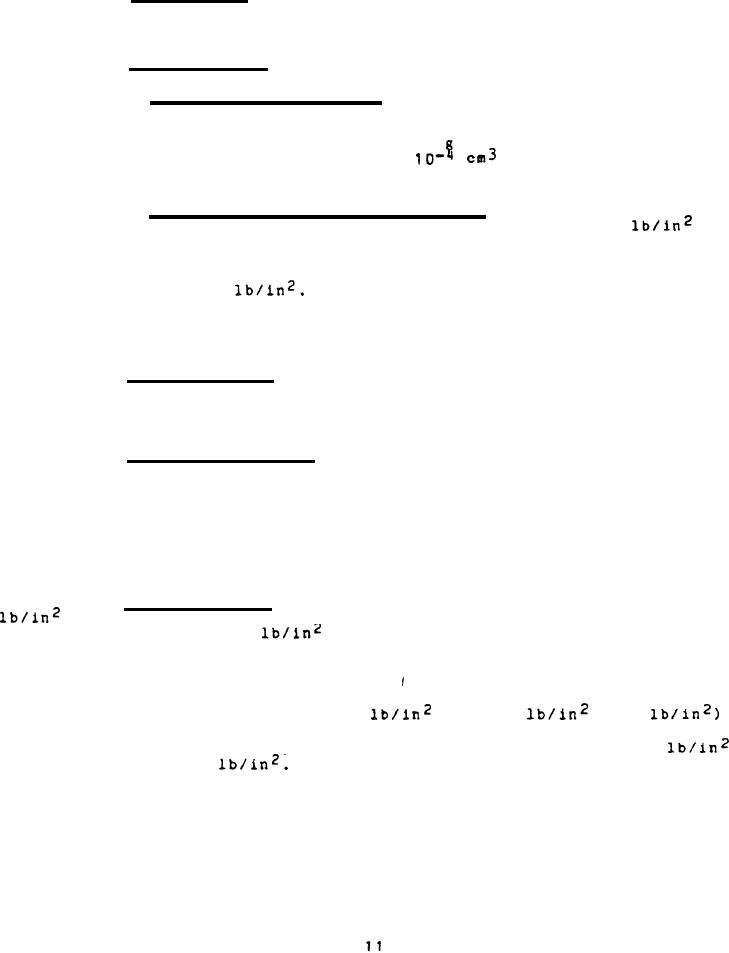 |
|||
|
|
|||
| ||||||||||
|
|  MIL-C-24604(SH)
4.6.2
Examination. The cylinder shall be carefully examined to
determine conformance to the requirements of this specification including
design, volume, weight, workmanship, marking, and for any visible defects.
4.6.3
Leakage
tests.
4.6.3.1
Pneumatic leakage test. The cylinder shall be subjected
to pneumatic leakage test at normal operating pressure and ambient
temperature.
Leakage shall not exceed the rate allowable in 3.3.2.
The
method used to determine the rate of leaka e shall be reported and shall
per second.
be capable of measuring leakage of 1 x
Leakage shall
be measured over a period of not less than 5 minutes.
4.6.3.2 Extreme temperature leakage test. The cylinder shall be
subjected to a pneumatic leakage test at a pressure of 3700
and
at a temperature of minus 20F.
After the temperature of the cylinder
has stabilized, the leakage rate shall not exceed the permissible rate
stated in 3.3.2.
Test shall be repeated at a temperature of 160F and
at a pressure of 6300
After the temperature of the cylinder has
stabilized, the leakage rate shall not exceed the rate permissible In
3.3.2.
Leakage shall be measured over a period of not less than 15 minute.
at each temperature.
4.6.4
Vibration test. The cylinder shall be subjected to a
vibration test in accordance with MIL-STD-167-1 to determine conformance
with 3,3.5.
The cylinder shall be pressurized with gas to room temperature
operating pressure and mounted with brackets to simulate installation.
.
Thermal shock test. Cylinder shall be pneumatically
4.6.5
pressurized to operating pressure at room temperature and sealed and soake
at minus 20F for a period of 6 hours.
Cylinder shall be transferred to
an atmosphere at 160F and soaked for a period of not less than 2 hours.
Throughout this test, the cylinder shall remain sealed with pressure
allowed to fluctuate with temperature.
The transfer of the cylinder from
one temperature chamber to another shall be made in no more than 5
minutes.
The cylinder shall meet the requirements of 3.3.4.
4.6.6
Endurance test. Two cylinders shall be pressurized to 3700
at a temperature of minus 20F, for not less than 72 hours, and
then pressurized to 6300
and soaked at a temperature of 160F
for not less than 72 hours.
They then shall be subjected to cyclic
pressure application at a rate not to exceed 10 cycles per `minute (c/m)
as follows:
Apply 100 cycles (O
to 5000
to O
at
(a)
room temperature.
Apply 3500 cycles at pressure excursions of 3700
to
(b)
6300
Test shall be conducted in an atmosphere
of 120F and not less than 95 percent relative humidity.
Upon completion of this exposure and within 24 hours of
removal from humidity, one cylinder shall be sujected to
the pneumatic leakage test (see 4.6.3.1) and to the
The
hydrostatic burst test as specified in 4.6.7.
endurance test of the other cylinder shall then be
continued by an additional 6500 pressure excursions in the
|
|
Privacy Statement - Press Release - Copyright Information. - Contact Us |